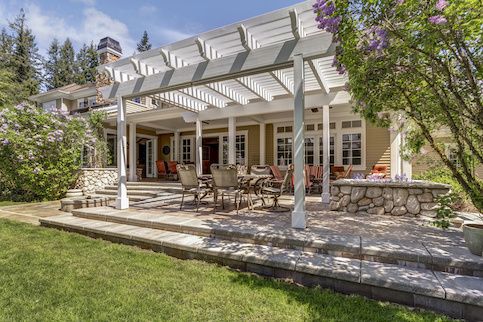The hard truth of buying a house is that when you spend less in one category, you often end up spending more in another to make up for it. If you buy a cheaper home, you might spend more on maintenance and repairs. If you try to save on closing costs by rolling them into your loan, you end up with higher monthly payments.
If you get a Federal Housing Administration (FHA) mortgage so you can afford a low down payment, you’ll have to pay a mortgage insurance premium (MIP). But what’s a mortgage insurance premium and does it differ from regular mortgage insurance?
Let’s take a look at what MIPs are, how they work and how to calculate how much you’ll be paying.
What Is MIP (Mortgage Insurance Premium)?
Mortgage insurance helps offset the lender’s risk when a borrower makes a small down payment; as low down payments increase the amount of money your lender loses if you default on your mortgage (lower down payment = larger loan).
Since FHA mortgages allow for down payments as low as 3.5% for borrowers with a credit score as low as 580, mortgage insurance is required for all FHA home loans. The mortgage insurance you’ll pay on an FHA loan is simply referred to as a mortgage insurance premium, or MIP.
Please note that it is possible to get an FHA loan with a credit score as low as 500, but you’ll need to put 10% down and could end up with a higher annual percentage rate (APR). Be advised that most lenders won’t offer the loan if your median score is below 580.
See What You Qualify For
Buy A Home
Discover mortgage options that fit your unique financial needs.

Refinance
Refinance your mortgage to have more money for what matters.
Tap Into Equity
Use your home’s equity and unlock cash to achieve your goals.
How Is Your MIP Determined?
All FHA mortgage borrowers – with one exception – will pay 1.75% of the loan amount in upfront mortgage insurance premium (UFMIP). While UFMIP is due at closing, this one-time cost can be financed, meaning the UFMIP can be included in the loan amount, and the borrower won’t have to bring this cash to the closing table.
Borrowers will also have their annual premiums added to their monthly mortgage payments. Annual premiums can range between 0.15 – 0.75% of the loan amount, depending on how much is borrowed, how much is put down and how long the loan term is.
See What You Qualify For
You can get a real, customizable mortgage solution based on your unique financial situation.
Do You Pay For MIP When Refinancing?
The exception to this is borrowers who are doing an FHA Streamline Refinance on an FHA loan that was endorsed prior to June 1, 2009. These borrowers will pay UFMIP that’s 0.01% of the loan amount. Additionally, their annual MIP will amount to 0.55% of the loan.
If you’re wondering if this exception applies to you, know that your endorsement date isn’t the same as your closing date. Endorsement typically happens shortly after closing. If you aren’t sure what your endorsement date is, you’ll need to contact the FHA.
If you aren’t in this group, how much you’ll pay for your annual mortgage insurance on your FHA loan will depend on a few different factors.
How To Calculate Your Mortgage Insurance Premium
Your annual MIP will be divided evenly across each of your monthly mortgage payments.
Say, for example, you’re getting a 30-year FHA loan for $200,000, and you make a down payment of 3.5%. In this scenario, your annual MIP rate would end up being 0.85% of your loan amount, or $1,700 per year. That means that each month, about $142 of your mortgage payment will go toward this annual premium.
MIP Vs. Other Types Of Insurance
Now that you know what MIP is, it’s important to understand the difference between MIP and other types of mortgage insurance you might come across.
MIP Vs. PMI (Private Mortgage Insurance)
On a conventional mortgage, mortgage insurance is referred to as private mortgage insurance (PMI). Borrowers with a conventional mortgage will have to pay PMI only if they make a down payment less than 20%.
This differs from FHA loans, on which borrowers will pay mortgage insurance regardless of the size of their down payment. Both MIP and PMI insure the lender against risk in the event the borrower defaults on their type of loan.
MIP Vs. MPI (Mortgage Protection Insurance)
MIP or PMI shouldn’t be confused with mortgage protection insurance (MPI). Out of these three types of insurance, MPI is the only policy that benefits the homeowner.
In the event of the borrower’s death, MPI will pay off the loan so that the remaining household members don’t have to worry about either taking over the mortgage or losing the house. Because of this, MPI is actually considered to be a type of life insurance.
MIP and PMI only benefit the lender, even though borrowers pay the premiums.
Mortgage Insurance Premium FAQs
Let’s take a look at some commonly asked questions about MIP.
Are there ways to avoid MIPs?
FHA loans are often seen as a good option for borrowers with less money saved up as these loans allow down payments as low as 3.5%. However, because of this, it’s impossible to avoid MIP on an FHA loan.
If you have enough cash saved up to make a 20% down payment, applying for a conventional mortgage might be a better option for you. When you make a 20% down payment on a conventional loan, you won’t have to pay for mortgage insurance.
Additionally, if you put less than 20% down on a conventional loan, you’ll be able to have PMI removed when you reach 20% equity in your home, which isn’t the case for MIP on FHA loans.
How long do MIP payments continue?
In some cases, you may be able to have MIP removed. However, many FHA borrowers will pay MIP for the life of their loans.
- If you made a down payment of 10% or more, you may be able to have MIP removed after 11 years of making payments.
- If you received your loan prior to June 3, 2013, you may qualify for cancellation if you’ve reached 22% equity in your home.
If you have at least 20% equity in your home but aren’t eligible to have MIP removed, your best option may be to refinance into a conventional loan – as long as that makes sense for your current financial situation. When you refinance into a conventional loan and keep at least 20% equity in your home, you won’t be required to pay for mortgage insurance.
Is mortgage insurance required for other mortgage types, such as USDA or VA loans?
Neither United States Department of Agriculture (USDA) nor Department of Veterans Affairs (VA) loans require mortgage insurance. However, because each mortgage does allow for a low – or even no – down payment, additional costs and fees are set in place to protect lenders from the risk of borrowers defaulting on their loans.
The Bottom Line: MIPs Are A Fact Of Life For FHA Loans
Though MIP can increase your monthly mortgage payments, it can also help make homeownership more accessible to those who can’t afford some of the high upfront costs that come with it.
If you’re considering an FHA loan, it’s important to weigh all the costs that’ll come with that loan. You may decide that MIP is worth being able to keep your down payment affordable, or you may prefer to wait and save your money so you can afford a mortgage insurance-free loan. It all depends on what makes the most sense for you.
Take the first step toward buying a house.
Get approved to see what you qualify for.

Victoria Araj
Victoria Araj is a Staff Writer for Rocket Companies who has held roles in mortgage banking, public relations and more in her 15-plus years of experience. She has a bachelor’s degree in journalism with an emphasis in political science from Michigan State University, and a master’s degree in public administration from the University of Michigan.












